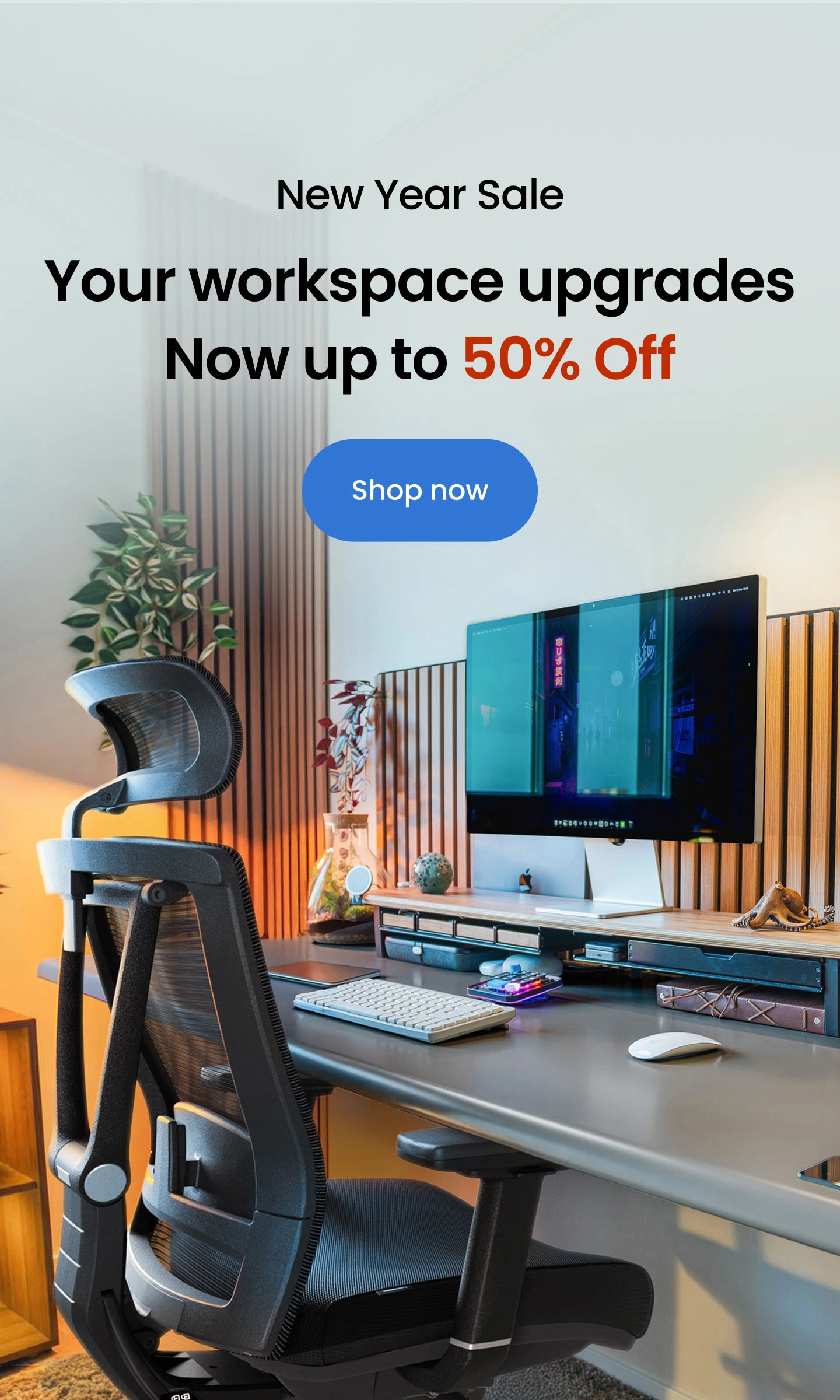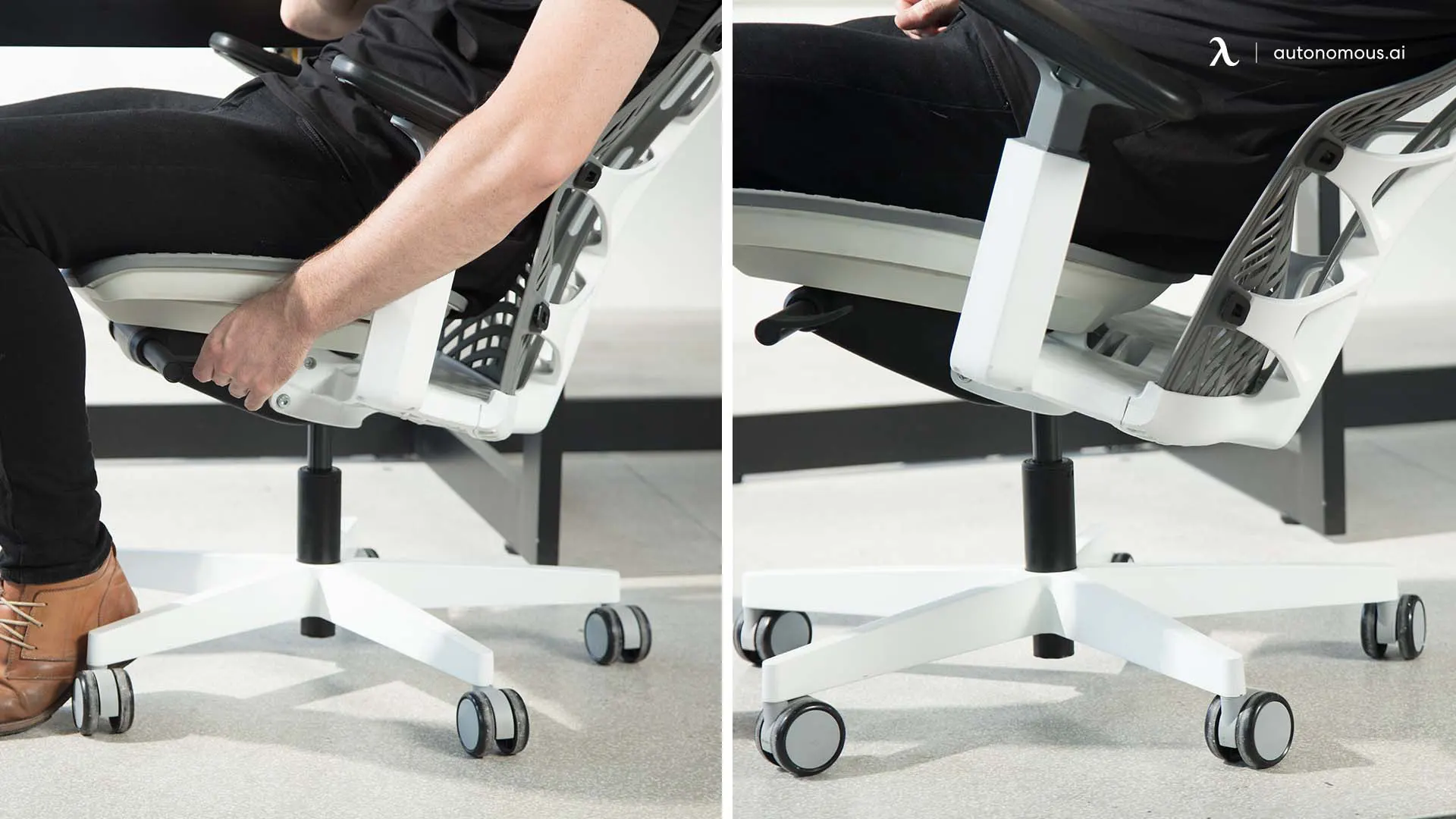
Types of Tilt Mechanisms on Office Chairs Explained
Table of Contents
Office chair tilt mechanism in office chairs are extremely important for a healthy back and proper spinal alignment, as the tension and strength of the tilt mechanism determines how well your back is supported. There are lots of different types out there, so here are the most common that you can look for and evaluate which might be best for your needs.
The average American adult sits today more than ever before. According to the American Heart Association, sedentary jobs have increased by 83% since 1950. Since you spend 8 or more hours daily sitting at your desk, it’s crucial to have the right office chair. There are numerous types of tilt mechanisms on office chairs, and choosing the right one can affect long-term comfort significantly.
From synchronous, single point tilt, to knee tilt, although each tilt mechanism reclines the backrest of an office chair, the difference in experience varies significantly and has a direct effect on comfort, too. In this article, we’ll look at all the major tilt mechanisms out there, and how to pick the right one for your needs.
Summary of Office Chair Tilt Mechanisms
This table helps you understand the various tilt mechanisms available in office chairs, aiding in selecting the best chair for your needs.
| Tilt Mechanism | Description | Pros | Cons | Ideal For |
|---|---|---|---|---|
| Fixed Tilt | Chair back and seat tilt together at a fixed angle. | Simple design, affordable | Limited adjustability | Basic office tasks, short-term use |
| Center Tilt | Chair pivots from the center, tilting the back and seat simultaneously. | Comfortable recline, easy to use | May not support legs well during recline | General office use |
| Knee Tilt | Pivot point is near the front, allowing a more natural recline. | Better leg support, maintains seat level | Can be more expensive | Extended sitting, ergonomic needs |
| Synchro Tilt | Backrest and seat tilt in a synchronized ratio (typically 2:1). | Balanced support, promotes dynamic sitting | More complex mechanism, can be pricier | Ergonomic work environments |
| Multi-function Tilt | Allows independent adjustment of backrest and seat angle. | Highly customizable, versatile | Can be complex to adjust | Task-intensive work, long hours |
| Forward Tilt | Allows the seat to tilt forward slightly, encouraging an active posture. | Promotes better posture, reduces back strain | Not all chairs offer this mechanism | Active sitting, ergonomic needs |
| Free Float Tilt | Backrest can tilt independently without the seat moving. | Allows constant back support during movement | Can feel unstable to some users | Frequent recliners, dynamic tasks |
Office Chair Mechanism Types to Know
1. Synchronous Office Chair Tilt Mechanism
In ergonomic office chair back pain with synchro tilt mechanism, the seat pan and the backrest are linked, but they tilt independently as you lean back. The backrest and seat pan of an ergonomic chair recline at a fixed ratio—usually 2:1 as you lean back. This means for every 8 degrees of backrest tilt; the seat pan moves 4 degrees.
Normally, the ability to adjust the chairs is located underneath the seat pan, so you can easily configure your chair for improved comfort. The ability of the backrest and seat pan to tilt individually allows you to tilt even while you’re resting your feet on the floor.
Another essential feature of office chairs with synchro tilt mechanism is the waterfall seat design. This design reduces stress on your thighs when tilting backward and the open seamless construction stimulates blood circulation, reducing stress on the lumbar region.
Choosing an ergonomic office chair with synchro tilt mechanismm is a good ergonomic choice.
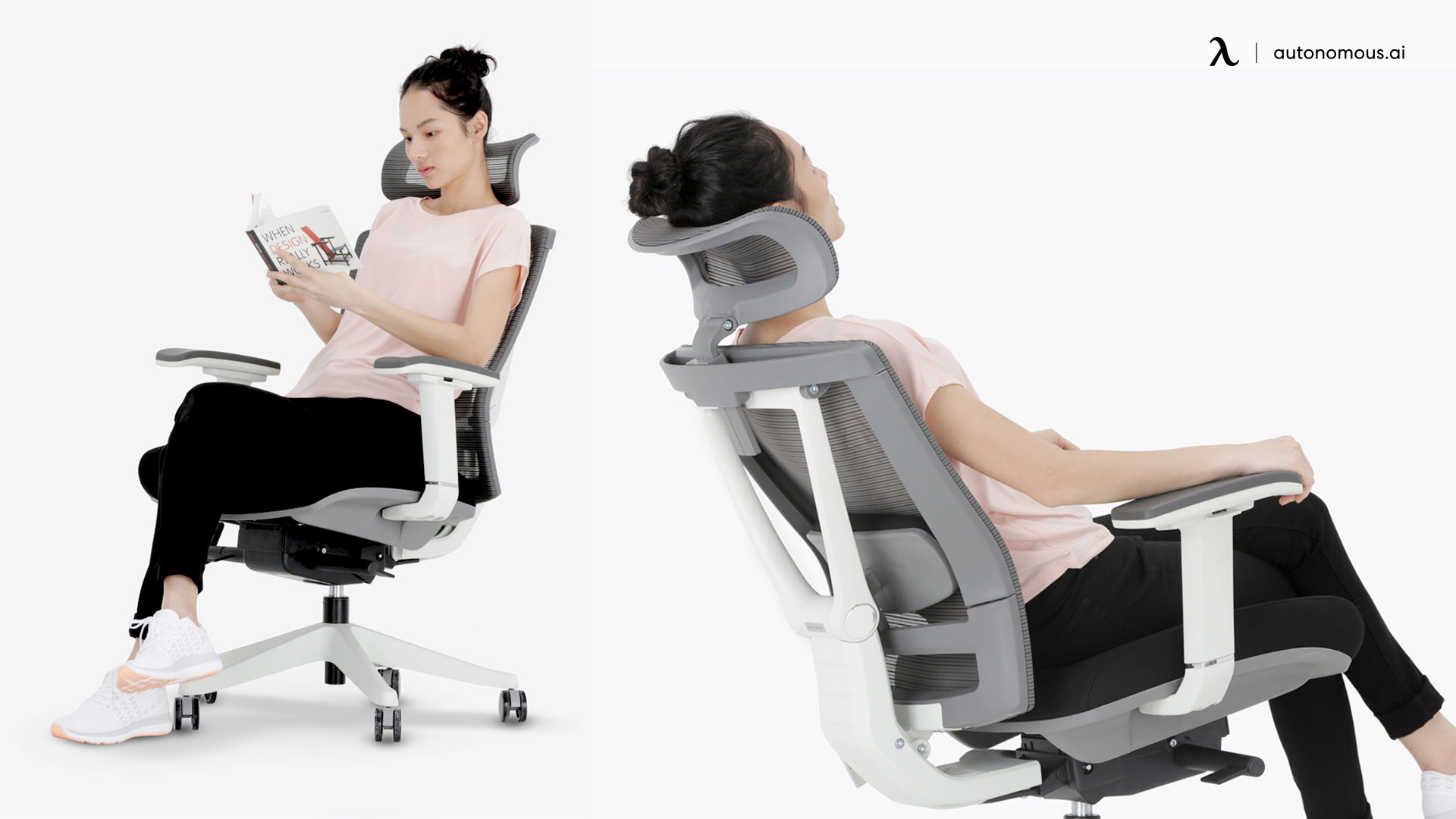
2. Knee Tilt Mechanism
For the knee tilt mechanism, the pivoting point is near the front of the seat. This leads to a wide-angle tilt, which still keeps the front of the seat relatively level. This tilting mechanism is common in the conference room and executive chairs.
The knee-tilt mechanism combines qualities from synchro tilt mechanism and single point tilt mechanisms.
Since the pivoting point is near the front of your seat, your feet will remain planted on the ground even with a larger recline in the seat pan and backrest. However, because of the location of the pivoting mechanism, knee tilting chairs lack more advanced ergonomic features, such as seat depth adjustment.
Thus, choosing an office chair with the knee tilt mechanism is a basic to good ergonomic choice.
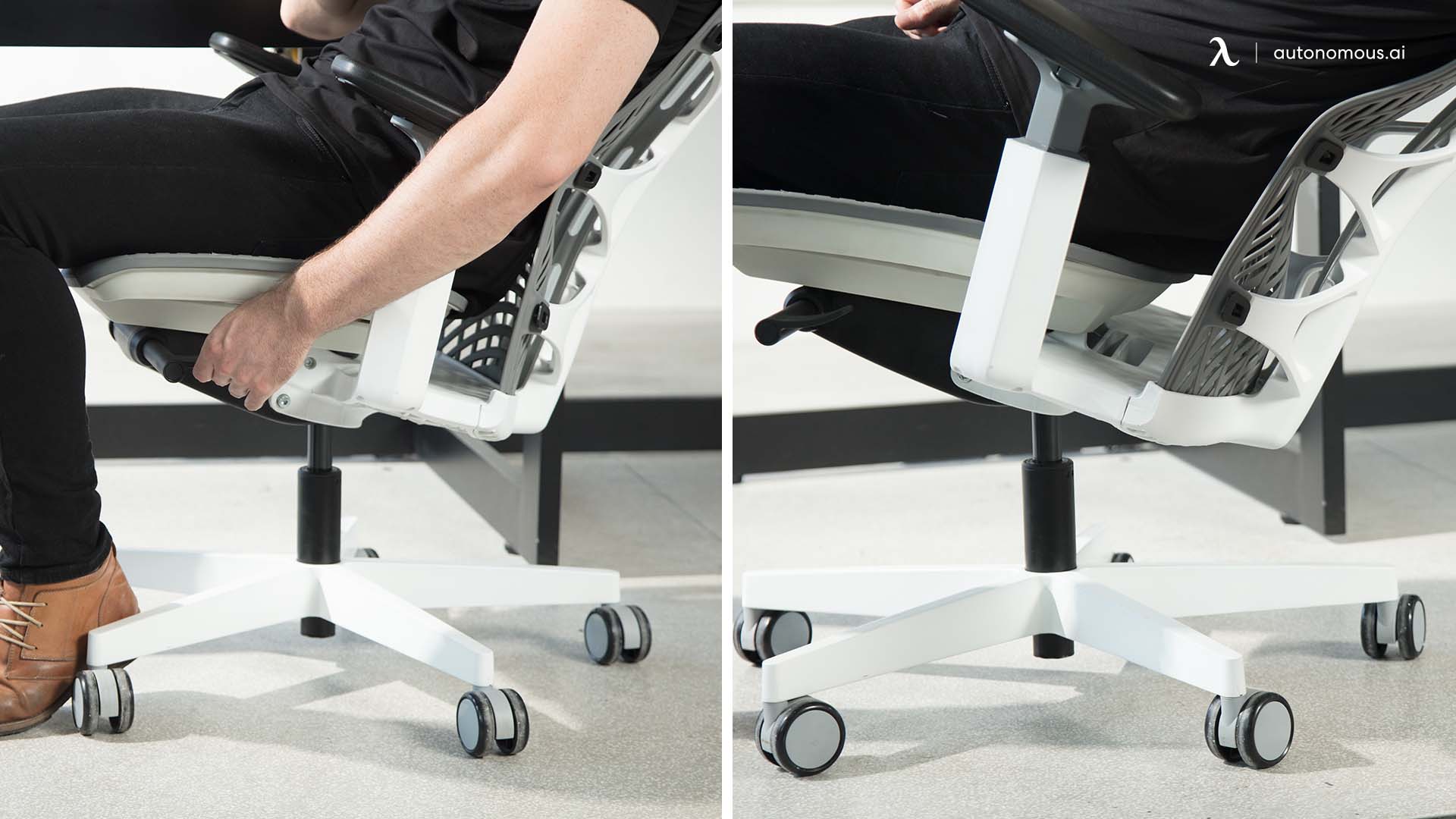
3. Forward Tilt Mechanism
The forward tilt mechanism adjusts the angle of the seat pan. This tilting mechanism tilts the front of the seat up or down. A forward sloping seat pan increases blood flow to the lower body, all while reducing lower back pressure and pain in the forward-leaning posture.
However, the forward tilt mechanism seldom exists by itself in a chair; it’s usually found as part of a multi-tilting mechanism to offer a balanced range of adjustments. Today, only a few ergonomic chairs feature the forward tilt mechanism. Choosing an ergonomic chair with a forward tilt mechanism is an excellent choice in terms of ergonomics.
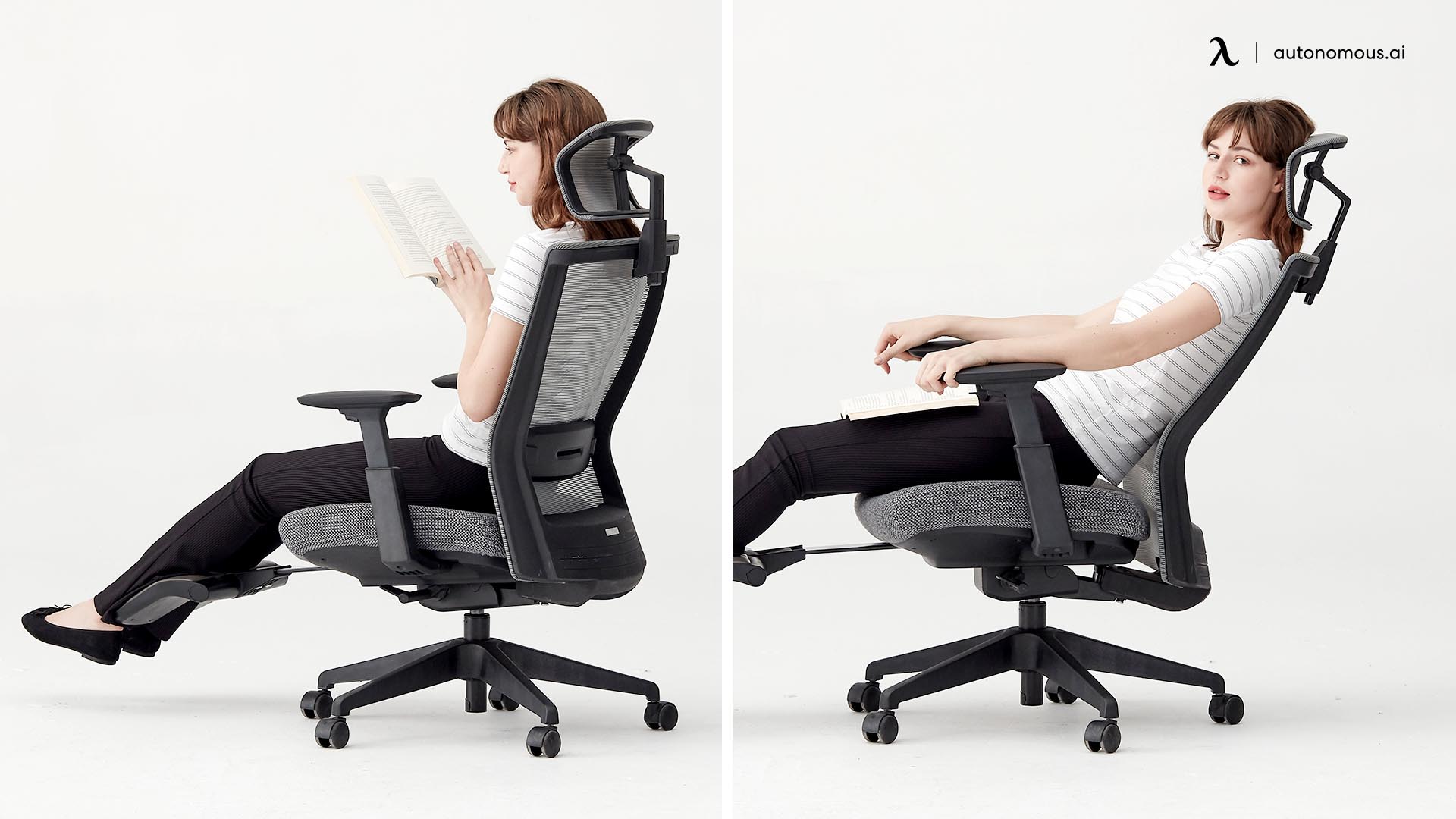
4. Multi-Function Tilting Mechanism
A Multi-function tilt or a synchro tilt mechanism is an office chair tilt mechanism where the backrest and seat pan on a chair tilt independently of each other. This tilting mechanism allows you to personalize the exact angle of the backrest and seat pan to achieve the most comfortable proper sitting posture for lower back pain.
Theoretically, multi-function tilting offers the best level of ergonomics, but you must consider the additional levers and time needed to find the right angles for both the seat pan and backrest. If you are unhappy with the office chair tilt mechanism on synchronous tilt, or forward tilt, then you should try the multi-function tilt mechanism.
The multi-function tilt mechanism is an excellent choice, ergonomic-wise.
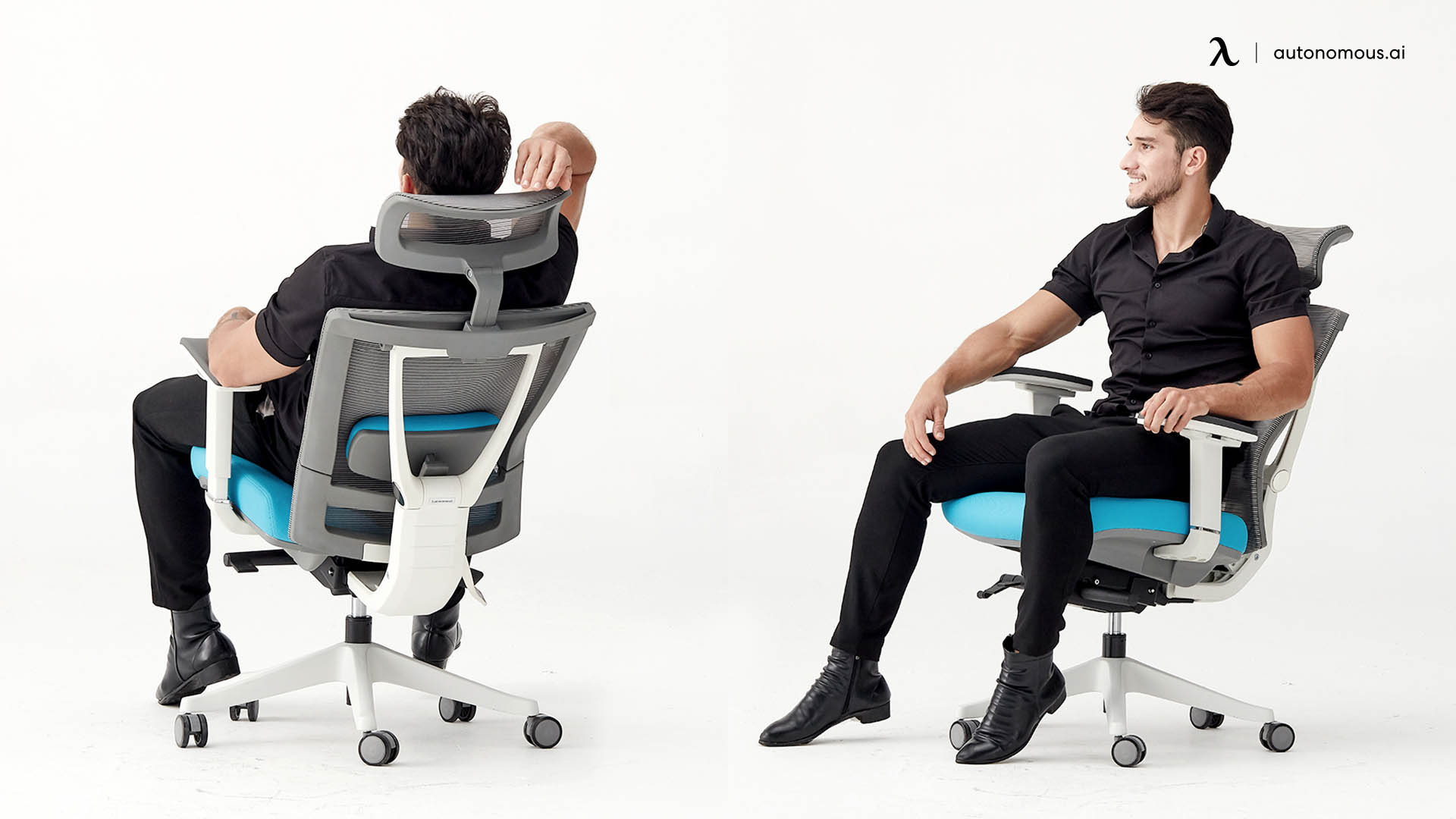
5. Forward Glide Tilt Mechanism
With the forward glide tilt mechanism, the seat pan adjusts forward and down as the backrest reclines.
Forward glide tilting works differently from other office chair tilt mechanisms in office chairs. The seat pan moves in the reverse direction and downwards relative to the recline angle of the backrest, instead of reclining backward.
Some benefits of the forward glide tilt mechanism include:
- It keeps your lower body in a slightly inclined angle.
- It allows your arms and eye level to stay comfortably within the natural reach zone, even with a heavily reclined backrest. This is great for people suffering from back pain, where the ideal backrest angle is about 135 degrees.
The forward glide tilting is a good choice in terms of ergonomics.
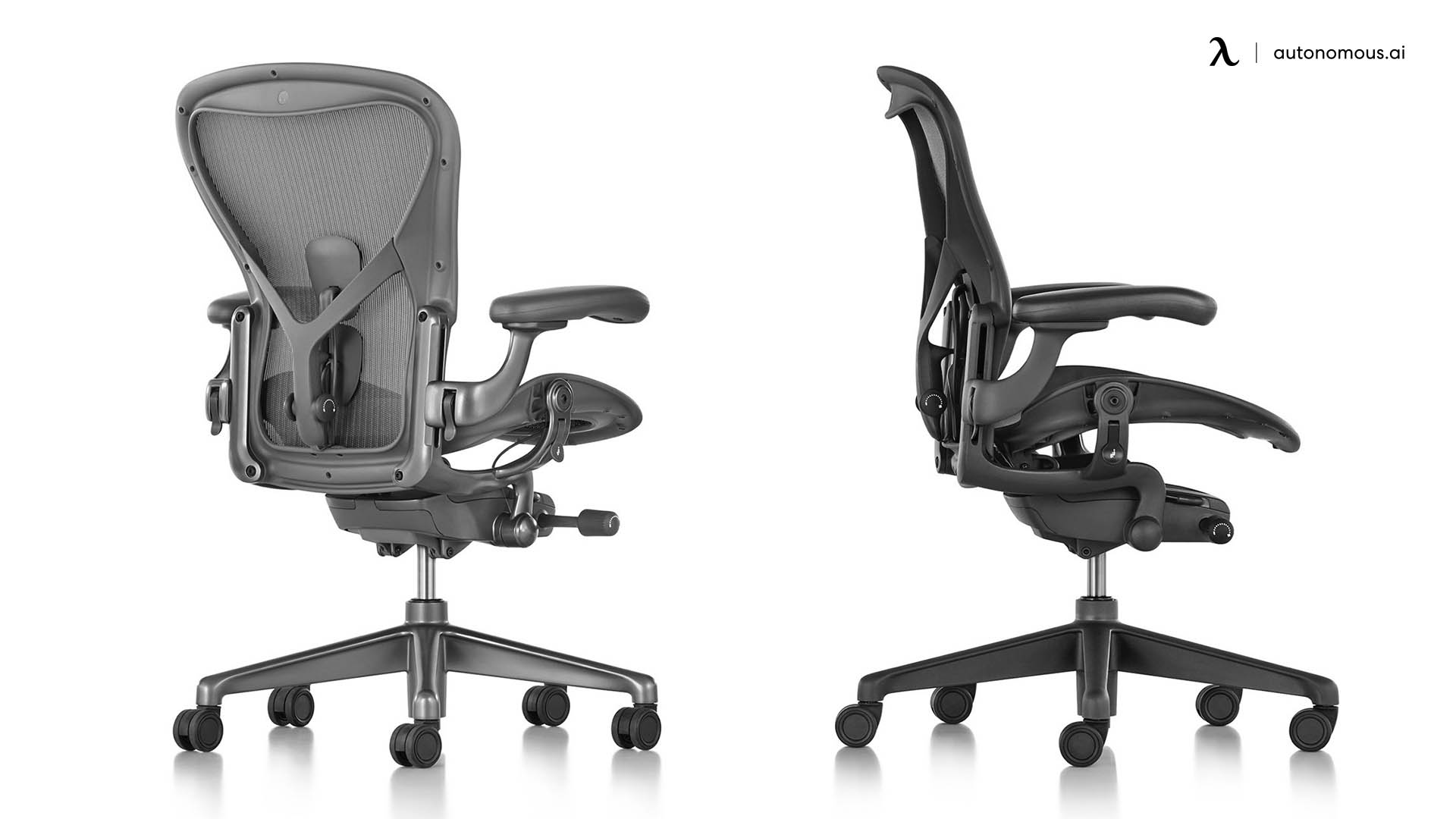
6. Single Point Tilt Mechanism
This tilting mechanism is normally found on less expensive office chairs. The single point tilt mechanism engages a basic tilt mechanism in the center or back of the seat to tilt the backrest and seat pan back-to-back. The recline ratio is 1:1.
The single point tilt mechanism isn’t ideal for any chair that tilts over 5-10 degrees backward. In this office chair tilt mechanism, the angle of the backrest increases at the same rate as that of the seat pan, resulting in increased pressure on the underside of your thighs as you recline. Also, this mechanism exasperates the feeling of falling backward.
Choosing an ergonomic office chair with a single point tilt mechanism is a basic ergonomic choice.

7. Seat Angle Lock Mechanism
Some office chairs feature the seat angle lock mechanism. The seat angle lock mechanism is ideal for working in a highly reclined position because it allows you to angle your entire body upwards, not just your back.
Note that whichever office chair tilt mechanism an office chair features—synchronous, knee tilt, etc.—typically only the backrest angle can be locked in. And the seat angle reverts to a flat angle once you stop applying pressure on the backrest.
However, for ergonomic office chairs with seat angle lock, you can also lock in the seat’s angle as the seat pan points upwards while you recline the backrest. This feature facilitates working in a highly reclined position from time to time, reducing the pressure on your back.

FAQs
Are knee tilt chairs more expensive?
Yes, chairs with knee tilt mechanisms tend to be more expensive due to their advanced ergonomic design and additional parts.
How do I choose the right tilt mechanism for my office chair?
Consider your ergonomic needs, the duration of use, and your budget. For instance, a synchro tilt or knee tilt is ideal for long hours and ergonomic support, while a fixed tilt may suffice for short-term use.
How do I use the tilt lock mechanism on my chair?
Typically, there is a lever or knob under the seat. You can engage or disengage the tilt lock by pulling or turning this control.
How do I adjust the tilt tension on my office chair?
There is usually a knob located under the seat. Turn it clockwise to increase tension (more resistance) and counterclockwise to decrease tension (less resistance).
Final Thoughts
Choosing the right office chair tilt mechanism can improve your comfort. Also, it can help you achieve the right sitting posture, and it can ease lower back pain. The ErgoChair Pro features a world-class tilt mechanism with multiple levers that allow you to tailor the support and resistance of your office chair to your exact requirements. This office chair allows you to control exactly how much lumbar support you need from your ergonomic chair. ErgoChair Pro features an adjustable lumbar system that uses a simple handle to unlock the right amount of pressure you need to maintain a healthy sitting posture.
Cover image by G-stock studio via Shutterstock
Spread the word
.svg)



